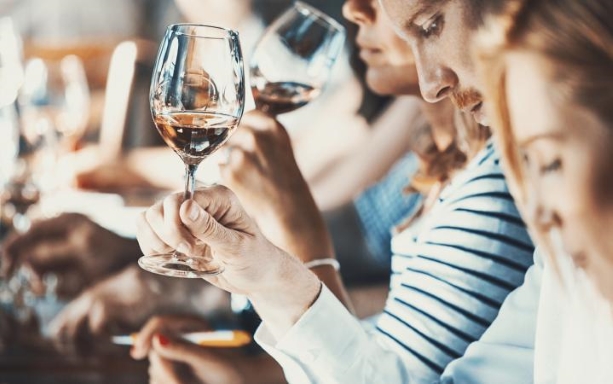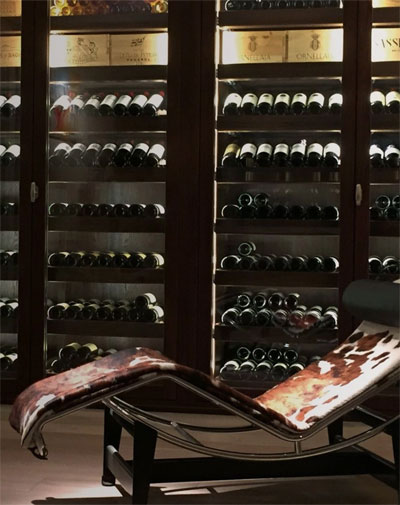Desember 10,2017
By the President of the Cyprus Sommeliers Association George Kassianos
Wine is to ENJOY
“Enjoy”. That’s the word. Most wine is drunk with food, usually in company with other people – be it one other
person or a convivial gathering of family or friends – it is a beverage to be enjoyed. The level and complexity
of enjoyment is for each one of us to decide. There are those who find one or two wines they like and who
never drink anything else. There is nothing wrong with that. Drink what you like with the food you like. At the
other end of the scale there are wine lovers who are always searching for new evocations of the winemaker’s
skill and who want the commensurate tasting skills. In between there are others who drink a range of wines, to
accompany a particular meal or occasion and who have some knowledge of both. Whatever the way, the
trick is simple: to find what you like and enjoy it in the way that you like.
Start simply, tasting wines here and there. Stay at that level if you wish. If your senses say “Explore” then advance.
Learn how to look at, smell, taste and appreciate wines of different grapes, different countries, different wineries.
Be as simple and light-heated as you wish – or go to classes and tastings and aspire to be a connoisseur. But
whatever you do, always enjoy, because to become too serious defies the reason the wine was made for you.
“Sight, Smell, Taste”
These are the three phases of getting to know wine. Sight: to see if the wine is clear, whether the colour is as
it should be (and wine books and magazines will guide you on what to look for in a particular grape or style
of wine). Smell: here the wine begins its talk to you – its aroma will tell you something of its complex make-up:
alcohol, fruit, acidity, maturation. Taste: the liquid comes on to the receptors of your tongue. Firstly at the tip,
sweetness. Next: saltiness, then sourness. Finally, at the back, bitterness. The more you taste and let the wine run
over your tongue the more you will find out.
For readers who want to rest at this point and enjoy the warmth and companionship of a glass or two of wine
with lunch or dinner, a lifetime of pleasure awaits. For those who want to go on, then the whole sampling
process takes us to a more serious study of the subject. We may title this…
“Swirl, Sniff and Sip”
Wine tasting is sometimes described as a science and an art; an adventure unlike any other your mouth has
experienced and, possibly, it is evaluated in more detail and depth than anything else that our palates encounter.
These are some hints to take you on the path to being a Wine Buff. Simply swirl, sniff and sip.
Swirling (sight)
Wine is more than just red or white. Reds can range from ruby to deep purple; whites can display shades of
green, gold and even brown. It’s helpful to hold your glass against a white napkin or sheet of paper to fully
see the colour vibrations. Young reds have more vibrant colours and fade with age whereas whites follow the
opposite route.
Swirling is not a show-off action. Looking at the characteristics of the sight of the wine is important. By twirling a glass of wine, you will see to a tiny or marked degree the wine sticking to the sides of your glass and slowly seeping back into the bowl. We call this residue “legs” (or viscosity) The thicker the legs the higher alcohol and the case of dessert wines, higher sugar content. If it looks like molasses then it probably will taste sweet like it too. On the other hand, if after a swirl the wine runs like water down the inside of your glass it will be light-bodied. The second benefit of swirling is the release of the wine’s aromas. This brings us to sniffing.
Sniffing (smell)
Half the fun of the wine tasting is trying to identify or give a name to the many perfumes that assail your nostrils. At first all you may get is the aroma of alcohol. Smelling needs practice, and as with tasting, not everyone has the necessary senses to do it well. But persevere and try to put into words what you can smell. First think of fruit, herbs and flowers. Try and associate the aromas with in which you are already familiar. Red
wines often smell of red or black fruits, like cherries or dark berries; whites can smell like white or light coloured fruits like apples, citrus, tropical fruits or honeydew.
Sipping (tasting)
All this swirling and sniffing has lead us to the final act, the taste. Take a slow sip and run it round your tongue before spitting-out or swallowing. This initial sip introduces your palate to the wine. Then take another one and try to describe your first impression. Is it bitter? Sharp? Mellow? Friendly? Fruity? Youthful? Full and well-rounded? Do you like it? Now take a third sip and pay attention to the body and finish. Body means alcohol, grape and maturation. Heavy? Nice and balanced? Satisfying? Then the finish: do the flavour and effect linger? Is the lingering pleasant? Was there lingering sweetness, if only a tiny bit? Was it bitter?
After this, you reflect on the thee aspects of the wine you have looked at, smelled and tasted and form your own opinion about it. Wine tasting is something you can’t master in one sitting. Take small steps – small sips if you prefer. Of one thing you can be sure: every swirl, sniff and sip you take has something to show you.
This entry was posted in News on 21/03/2015.












 BACK TO SHOPPING
BACK TO SHOPPING